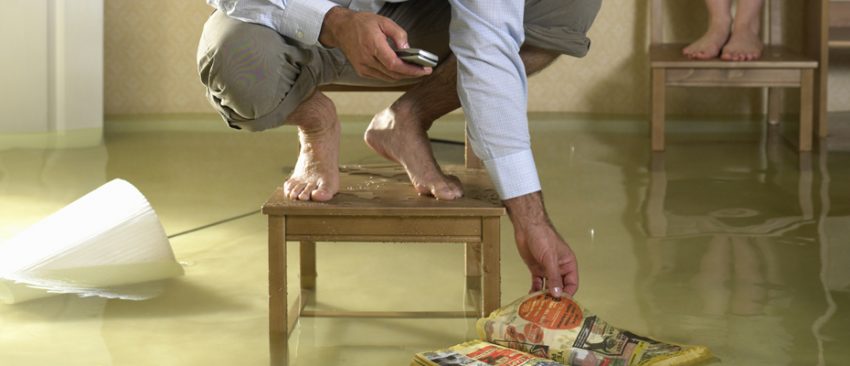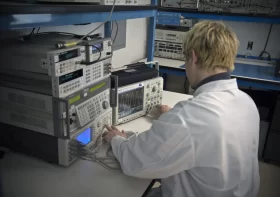FLOOD DAMAGE RESTORATION TIPS

Tips To Prevent Flood Damage
It can be difficult to deal with flood damage and the restoration process. The following water restoration tips and tricks should make it easier for you and make the process more efficient. They will also hopefully reduce costs.
Here are some expert-recommended tips for preventing water damage.
Steps For Cleaning Up Flood Damage
Cleaning up is the first step in a successful flood restoration. This is probably the most difficult part of flood damage restoration, but it’s also the first and most crucial. Here are some key steps you should take if you don’t know how to clean after flooding.
- Safety should be your first priority. Wear rubber boots and protective clothing, including a mask. Flood water may contain contaminants such as sewage that can be harmful to your health.
- Prepare all the necessary supplies, such as disinfectants, cleaning agents, and tools, before you begin. Different surfaces may require different cleaners.
- Use pails or pumps to remove standing water. After removing the standing water, vacuum the surface.
- Remove all soaked or contaminated materials.
- Remove removable furniture to make flood cleanup easier.
- Next, clean the walls and then the floors.
Within 24 hours, flood water must be removed. Flood remediation experts may be needed if the damage is extensive.
Disconnect The Power, And Unplug Any Electronic.
Shut down your power supply before you begin the cleaning process. Remember that electrocution is a real danger if your home has suffered severe flood damage.
Follow these safety tips to ensure your safety:
- After the water is removed or pumped, remember that most electrical appliances or equipment that has been flooded are already damaged. Do not connect them to the source of power, and turn them on before you get a green light from an electrician.
- Unplug all electronics. Do not touch electrical equipment when your hands are wet or if you’re standing on a slick surface.
- Before turning on your electricity, have your electrical system inspected. This includes the panels, wires, and switches.
- You should not enter the basement of your flood-damaged home until your electrician has disconnected your electrical meter. This is the only method to completely disconnect your house from the grid.
- The majority of electrical fixtures need to be replaced. A licensed HVAC contractor can tell you if the heating/cooling unit is still salvageable.
Remove Flood Water
You can remove flood water from your home in several ways. You should assume flood water to be contaminated. Wear protective clothing and footwear, gloves, masks, etc. Keep your cleaning supplies and tools close at hand. You can remove water in the traditional manner if you do not have electricity at home or if you are concerned about loose electrical wiring. You will also need buckets, old towels, or rags. Also, you will need soap, detergents, and disinfectants. After removing the water from the area, use a vacuum to dry it.
Shop-vac cleaners are a great investment. The water will drain faster and remove all the water in your home. After you’ve gotten rid of the majority of the water in your home, check all the corners for hidden moisture, mud, or water.
Dry Out The Affected Area.
After the flood water has been removed and all affected areas have been cleaned thoroughly, it is time to dry. It can be just as thorough as the cleaning process, and it should be done as soon as possible to avoid moisture-related issues in your home, such as mold and rotting.
Dry out the affected area by following these steps:
- Open your windows and doors to let air circulate in your home.
- Remove water-damaged furnishings and furniture from the house and let them dry in the sun.
- Rent or purchase high-powered blowers such as air movers in order to accelerate drying. A portable dehumidifier can be used to remove water vapor in the air.
- You should look for a wet/dry vacuum that has been rated for conditions with moisture. This is the best way to dry carpets, rugs, and curtains.
- Desiccants are products that can help you remove moisture from your house. Place them in closed areas such as closets and containers for a quick drying effect.
Preventing Mold Growth
Mold growth is one of the worst effects of flooding. Mold growth can be prevented by taking immediate action. Mold and mildew grow quickly in moist areas and can be found within 24 to 48 hours of exposure to water. Mold can pose serious health risks for your family if not dealt with quickly enough.
Follow these important steps to avoid mold growth after flood restoration.
- Open the windows and doors if it is less humid outside. Mold can be prevented by drying out the affected surfaces.
- Remove all porous or absorbent material that you can. Before you put your items back, make sure that the living space or area is completely dry.
- You should have the area cleaned as soon as you see any signs of mold. It is possible to do this yourself, as long as it’s done with caution. You should seek professional help to remove mold.
- Use fans and a dehumidifier inside your house.
- Look for signs of leakage. Moisture can be caused by burst pipes, plumbing problems, cracks in the walls, and holes in your roof. Fix them to avoid the growth of mold.
Conclusion
Every year, thousands of UK homeowners have to deal with flooding. If you don’t address the problem quickly enough, it can result in very expensive repairs. There are a few things you can to do lessen the damage before help arrives.
The first step in flood restoration is cleaning up. It is a difficult process, but it must be completed. You need to get rid of all the dirt, mud, and flood water that has accumulated inside your house, including those hard-to-reach corners. You can make the flood cleanup process easier by renting a sump pump from local contractors. Before you begin the cleaning and restoration process, make sure all electrical devices and switches are off in your home. You will also need to dry out the affected areas of your home. It will also prevent mold from growing, which can be dangerous to the health of your family.
You should be able, with the help of these tips, to get rid of any water in your home and bring it back to its former glory.




Leave a Reply